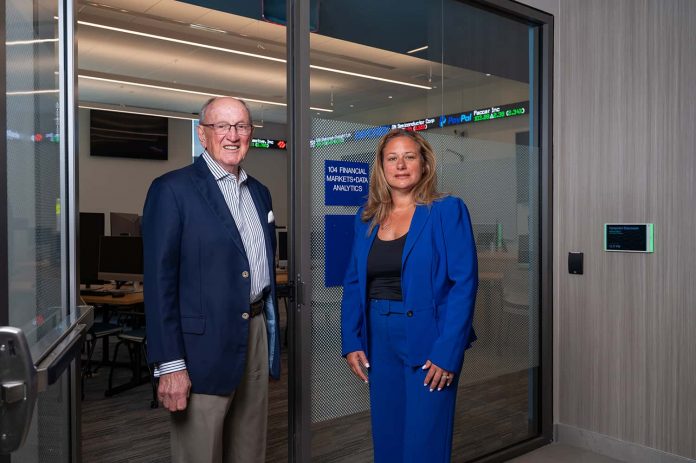Editor’s note: This is the third of a three-part series of articles about Southern’s exciting partnership program with the New Haven public school system to introduce high school students to college degree programs in industries that are in need of future employees. This article focuses on a business career pathway.
With the successful launch of career partnership pathways in nursing and teaching, Southern established a business career path this past summer.
Tony Rescigno, an executive in practice at Southern and retired businessman, suggested strategizing a way to attract more business students. Engaging with Dina Natalino, supervisor of College and Career Pathways for New Haven Public Schools, Rescigno found an enthusiastic collaborator to establish a business career track.
They conducted a workshop with the business pathway pilot scheduled to launch in fall 2024 for three of New Haven’s high schools. The program is open to sophomores, with a goal of welcoming 15 students each from Wilbur Cross, Hillhouse, and Hill Regional Career high schools. The participants can earn up to 30 college credits toward a future degree program at Southern, Rescigno said.
“The more we can get high school students interested in business, the potential for enrollment for Southern would improve. We think business is a key component of whatever you’re studying,” Rescigno said.
To create the business pathway, Natalino engaged educators at each of New Haven’s high schools that have business programs. Rescigno said many of the students hold part-time jobs, a good foundation for cultivating a career interest.
“A lot of them have worked through school and they’re hungry to know more,” Rescigno said. “It is difficult for kids at 17 years old to figure out what they want to do or what they need. I say, just bring an interest.”
Rescigno hopes the foundational approach will bear fruit, as high school students often need a deeper understanding of what a business career means.
“Business is an umbrella term,” he said. “I describe a small retail sporting goods store or a boutique where you run the business. We tell them you have to make a profit so you can pay the rent, pay your employees. We get very basic.”
Rescigno said the more the high school students envision their future career in business, the better chance they have of being prepared for a satisfying path.
“When we talk to these students, even if they want to be carpenters, we explain that it’ll be great for them to understand business and have some math and reading skills. That’s needed for everything when you own a business,” Rescigno said.
The program will offer business students coursework in marketing, accounting and data studies as job gaps grow in these business areas. Students can partner with businesses for experiential learning in business environments. They also will gain direct experience using Bloomberg Terminals, a computer system for analyzing real-time financial market data.
While the curriculum is in development, the School of Business’s state-of-the-art facility is ready to welcome the high school students.
“We’ve got this brand spanking new building that opened last spring. It has every bell and whistle you can imagine – all the technology and interview rooms, so businesses can come in and interview students. When these students from high schools come into the school, they’re going to be blown away at the potential if they (ultimately) come to Southern,” Rescigno said.
Natalino hopes to grow the pathways through a vision to make high school feel relevant and have students in their senior year poised to enter their career paths and get the training that they need. She sees it as a launching pad for students, particularly those who may not have the resources, encouraging them to view college as a real option.
“It’s our students that don’t want to go to college, who are left on their own to figure that out. Some of them say they’re thinking of taking a gap year or going to trade school, but many times, they keep working the same job they did in high school. If they leave us with certification or job training, they’re more likely to have that scaffold to a career pathway,” Natalino said.
For program coordinators, one important step is determining which students have the interest to embrace a pathway program. Students do not have to be the top academics in their class, but they must make the commitment to attend the classes.
“The pathways are open to all. If they’re not showing up, it’s a factor. But we don’t look at GPA. If they’re interested, we want them, because we want to connect them to their interests,” Natalino said.
The pathway program gives Southern a chance to cultivate its future attendees, whether they choose to attend SCSU or another Connecticut college. Benefits include helping to increase the local economy, get students working, and allow students to impact their communities.
For more information on the career pathways partnership program, contact Dr. Nilvio Perez at perezn18@southernct.edu.


